
Photo by rawpixel on UnsplashLorsque l’on parle de Management Visuel, un atelier incontournable nous vient rapidement à l’esprit : Au Tableau !
C’est à l’occasion de Riviera Dev 2017 que je me suis proposé de l’animer. Le problème est que n’ayant pas été très attentif, je me suis rendu compte que le temps qui m’était alloué n’était pas de 2h mais uniquement de 45 minutes ! 😕
Après quelques minutes de panique, de drame et de culpabilité, je me suis finalement lancé le défi d’animer cet atelier dans le temps imparti ! 😛
Je vous présente donc ici la mini-édition de l’atelier Au Tableau ! 🙂
Vous pouvez retrouver les supports utilisés ici comportant :
Constats et modifications
Suite à de nombreuses animations de l’atelier, j’ai pu observer des éléments récurrents sur lesquels les participants perdaient beaucoup de temps sans pour autant que cela soit d’une grande valeur. Mon action devait donc aller dans le sens de la simplification et de la clarté afin de ne pas trop altérer l’expérience ni l’apprentissage.
- Constat 1 : les participants tendent à se compliquer la tâche alors que la consigne de l’atelier est simple.
| Modification :
La consigne est également inscrite sur la fiche d’instruction en rappel de la consigne donnée oralement. |
- Constat 2 : les participants sont parfois perdus avec les termes « ouvrages » et « travaux »
| Modification :
Ce que l’on appelle « ouvrage », « travaux » et la relation entre les 2 est explicité visuellement sur la fiche d’instruction. |
- Constat 3 : le choix des ouvrages laissé libre fait parfois hésiter les participants à passer à l’action
| Modification :
Le nom des ouvrages est fixé explicitement sur la fiche d’instruction afin de focaliser l’attention des participants sur la forme du Management Visuel et plus sur le contenu. |
- Constat 4 : beaucoup d’ouvrages ne sont finalement pas utilisés et ne sont présents que pour matérialiser un stock.
| Modification :
Le nombre d’ouvrages total a été réduit de 12 à 7. |
- Constat 5 : le nombre de travaux par ouvrage est conséquent et n’a pas beaucoup d’incidence sur l’expérience des participants
| Modification :
Le nombre de travaux par ouvrage a été réduit de 5 à 3. |
- Constat 6 : le processus n’apparait pas toujours clair pour les participants ce qui ne les aide pas à passer à l’action
| Modification :
Le processus de production est clairement explicité dans la fiche d’instructions. |
- Constat 5 : les itérations n’ont pas d’intention clairement exprimées ce qui peut induire de la perte de temps, surtout lors de la 2nde itération
| Modification :
Chaque itération a un objectif clairement défini, explicité dans la fiche d’instructions. La mise à jour du tableau en itération 2 a été supprimée. |
- Constat 6 : la notion de priorité a peu d’impact sur l’expérience sauf pour l’ouvrage spécifié comme Urgentissime
| Modification :
Seule l’indication de priorité de l’ouvrage Urgent a été maintenue. Les autres ont été supprimées. |
- Constat 7 : les exigences n’ont pas toutes le même impact en terme d’apprentissage mais prennent néanmoins du temps à réaliser
| Modification :
Seules les exigences de valeur immédiate ont été maintenues.
|
- Constat 8 : la partie débriefing d’entre itération est chronophage, surtout lorsqu’il y a plus de 2 équipes en même temps
| Modification :
Transformation de cette partie en format Gallerie. |
Globalement, les modifications effectuées sont bien allées dans le sens de la simplification et de la clarification des éléments de consignes.
Même si j’ai bien conscience qu’il peut y avoir des éléments d’apprentissage dans le flou présent dans la fiche d’instructions textuelles, j’ai préféré m’en défaire pour porter mon attention sur les représentations émergentes des participants.
Au coeur de l’atelier
Préparation
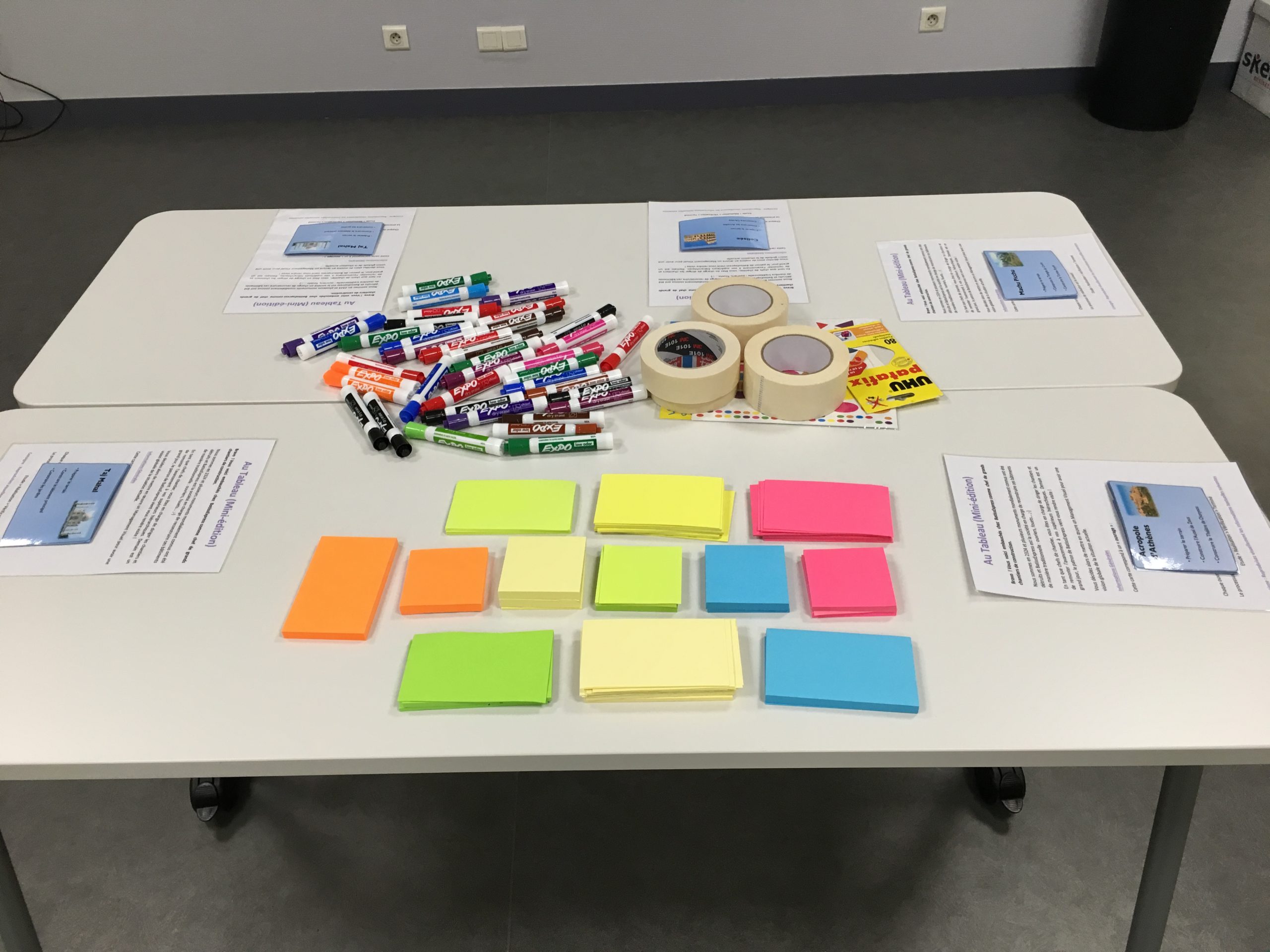
J’ai de la chance, je suis prévu à 14:00, donc j’ai le temps de la pause déjeuner pour installer tout ce qu’il faut.
Comme tout atelier, l’important est dans la préparation :
- Le matériel doit être positionné de manière à ce qu’il soit disponible pour l’ensemble des participants à tout moment.
- Les fiches d’instructions et les ouvrages sont déjà positionnés en face des surfaces dédiées des équipes.
Je prévois 4 personnes par équipe pour un fonctionnement optimal. Je ne l’ai jamais fait avec autant d’équipes différentes, c’est un challenge, mais pourquoi pas ! 😛
L’arrivée des participants ne se fait pas attendre et il y a finalement plus de monde que prévu. Difficile de refuser des gens qui vous regardent comme ça :

Alors nous finissons par être une bonne trentaine de personnes, et par chance les gens sont venus un peu plus tôt alors on commence ! 😉
Note : je ne décrirais pas l’atelier en lui-même, mais plutôt ce qu’il s’est passé dans cette variante de l’atelier original.
Itération 1 (10′)
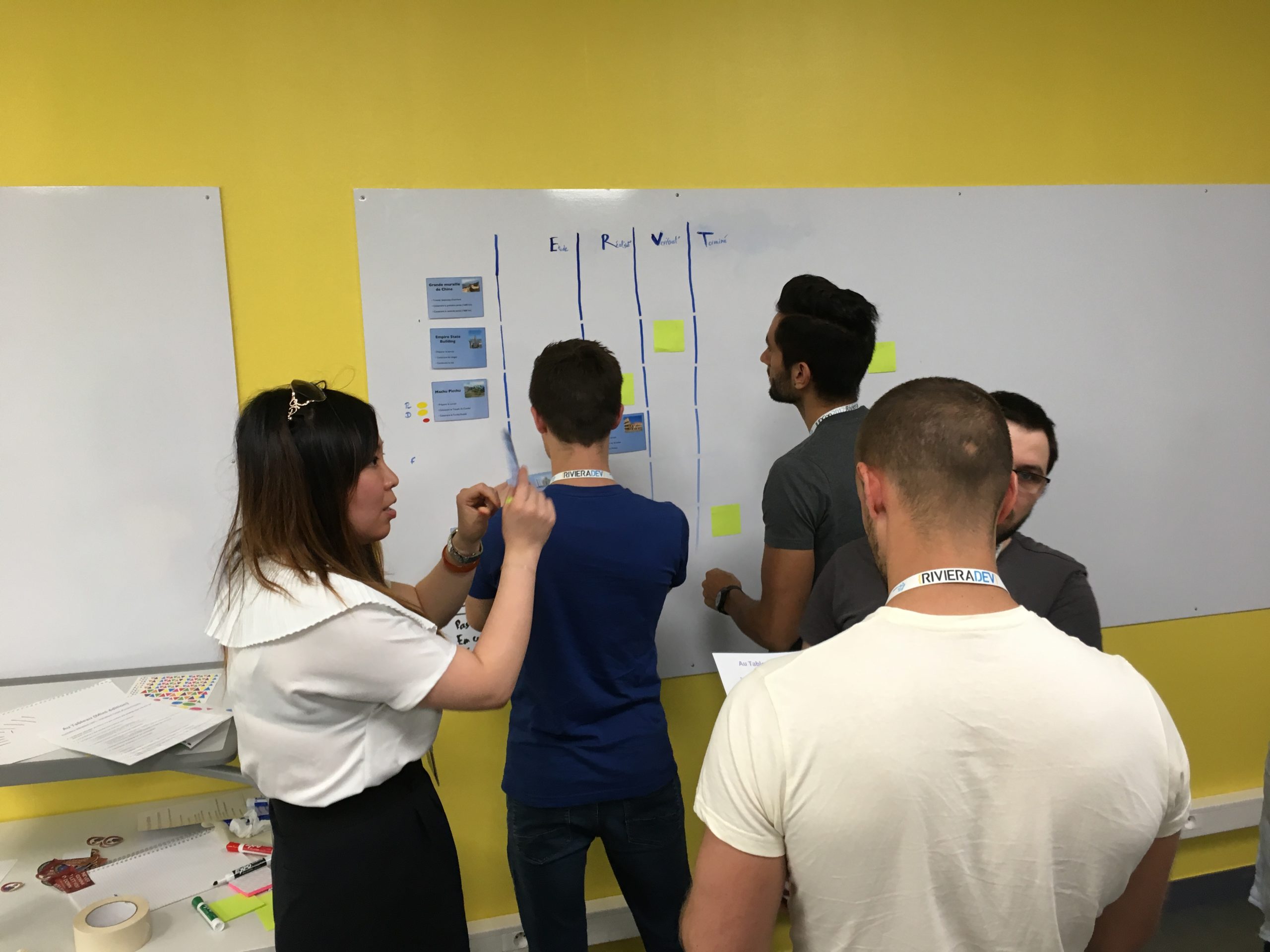
L’itération 1 se déroule sans encombre, cela démarre rapidement et cela se passe globalement comme dans l’atelier original ! 🙂
Gallerie (7′)

Modification ici d’une partie débriefing par tableau à un mode gallerie. J’invite chaque groupe à se ballader dans la salle et à échanger de manière informelle avec les différentes équipes. Cela marche plutôt bien : de la curiosité, du feedback et de l’échange se crée naturellement entre participants. Il y a tout de même 5 équipes donc 5 tableaux à observer !
Bien évidemment, la critique peut pointer le bout de son nez mais rien de bien méchant ! 😛
Itération 2 (10′)
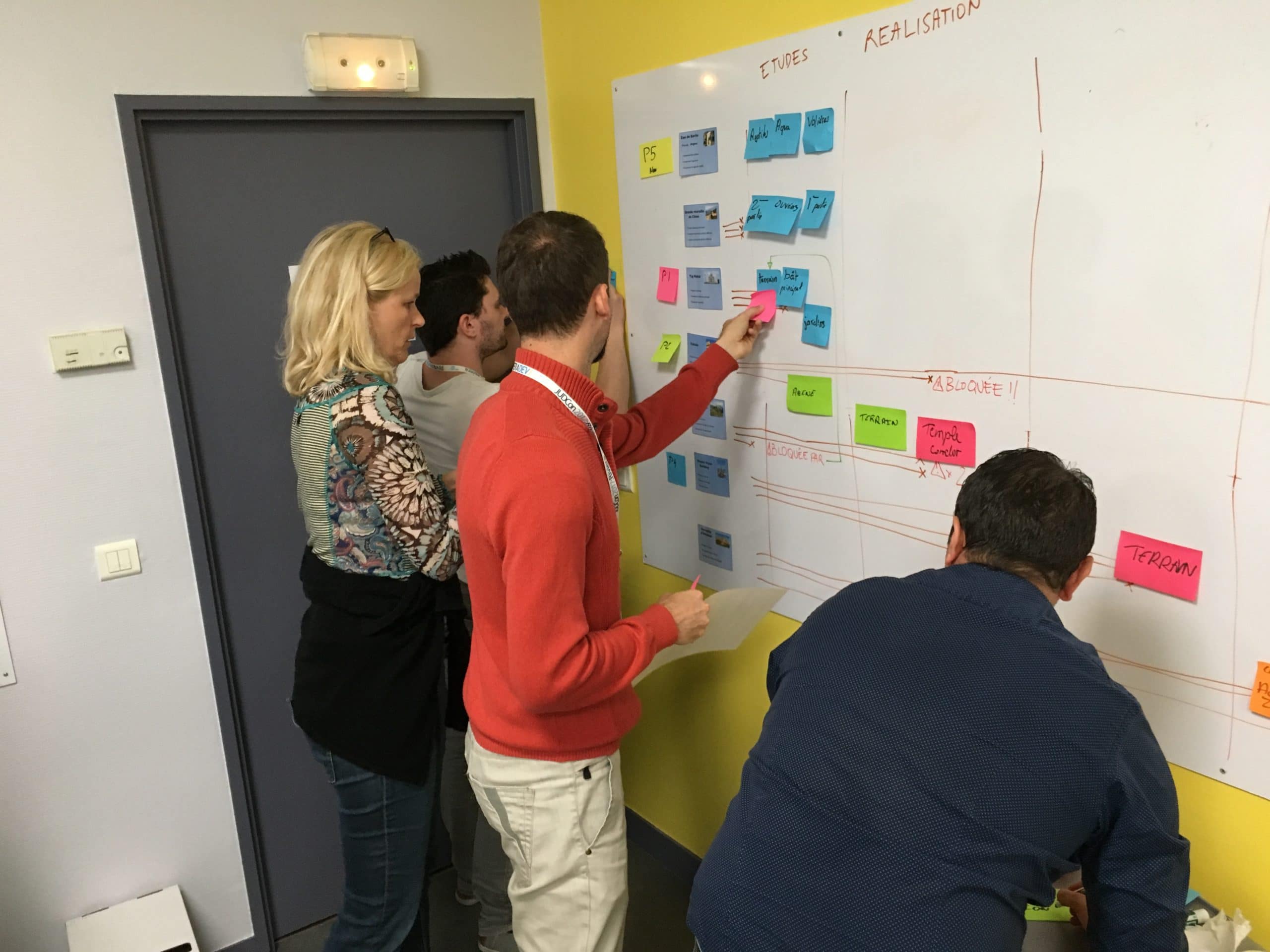
L’itération se déroule sans encombre particulière, avec les difficultés habituelles de l’atelier original.
Gallerie (5′)
Je laisse les participants se déplacer dans la salle pour voir l’évolution des différents tableaux. Les échanges se font plus rapidement vu que le mode Gallerie avait déjà été expérimenté plus tôt.
Débriefing (5′)
La partie débriefing est courte mais me permet surtout de partager certains messages tels que :
- La construction du Management Visuel en équipe est aussi importante que le résultat obtenu (1 équipe = 1 Management Visuel)
- On peut matérialiser une information de manière différente : couleur, matériaux, zones, espaces…
- Le Management Visuel n’est pas un outil de reporting mais un outil de collaboration de l’équipe
- « Voir ensemble, Agir ensemble, Apprendre ensemble »
- Actionner le Management visuel par le Daily : partage du protocole du Daily Kanban, une alternative au Daily Scrum
Résultats obtenus
Conclusion
Vous avez pu additionner les timings, je suis bien rentré dans les clous ! 😛
Ce fut une expérience particulièrement enrichissante pour moi dans le sens où les messages principaux ont bien pu être passés, alors que l’on avait 2 fois moins de temps. J’ai surtout pu mettre en oeuvre une notion qui m’est chère : le souci du cadre pour maximiser les résultats.
Merci à la communauté de l’Agile Playground Paris qui m’a permis de réfléchir à ce mini-format et tout spécialement Eric Lannemajou pour son soutien et son aide sur le Story Telling.
Je n’ai jamais refait ce format depuis la conférence, probablement parce que je n’ai jamais été contraint à un timing aussi serré que celui-ci, ce qui me permet généralement de garder les zones de flous inhérentes à l’atelier original.
Cependant, si de votre côté vous voulez tenter l’expérience, gardez bien en tête que le succès de votre animation sera dans le maintien du cadre !
Moins il y a de temps, plus il y a de monde et plus le cadre est important.


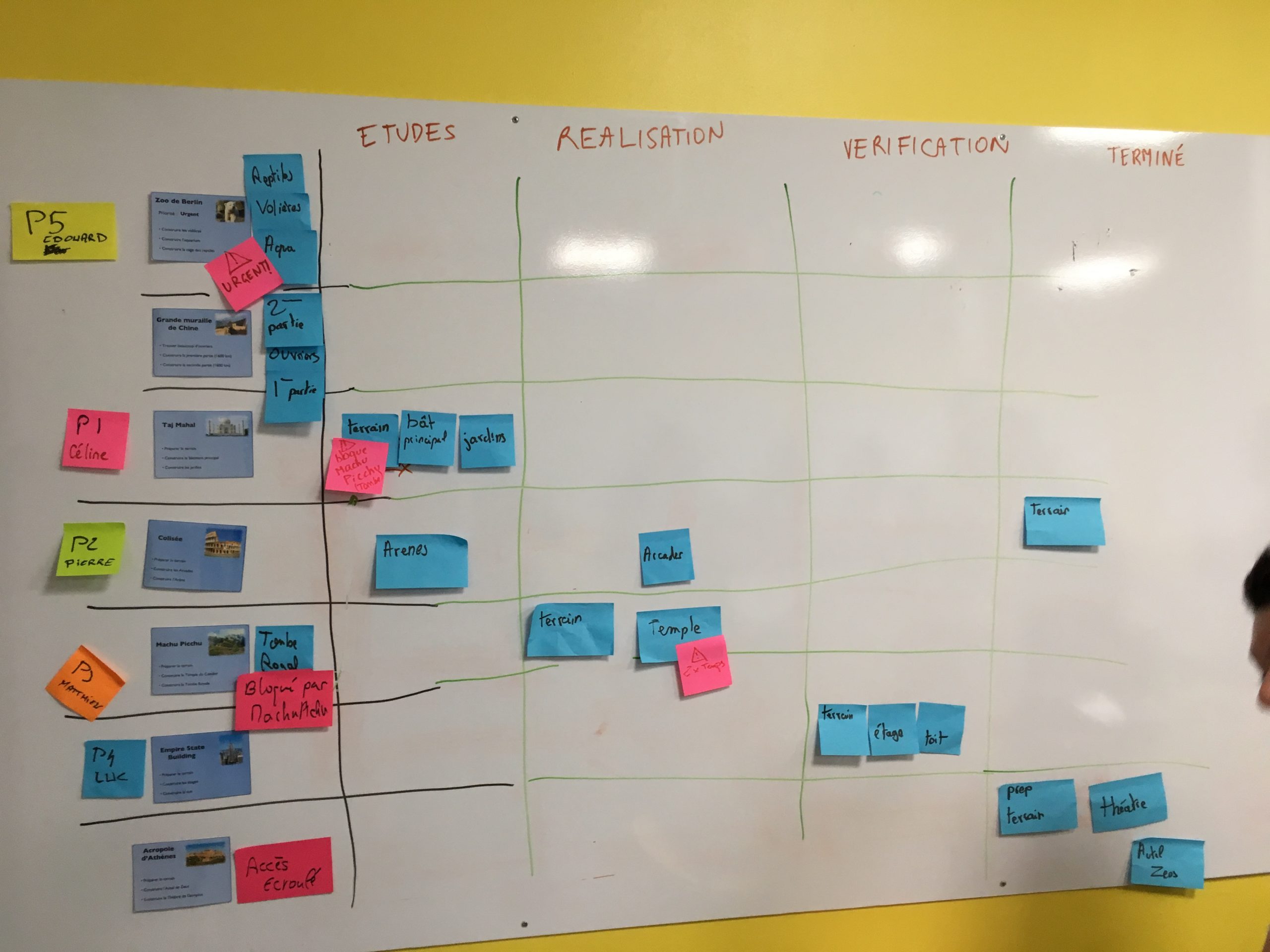


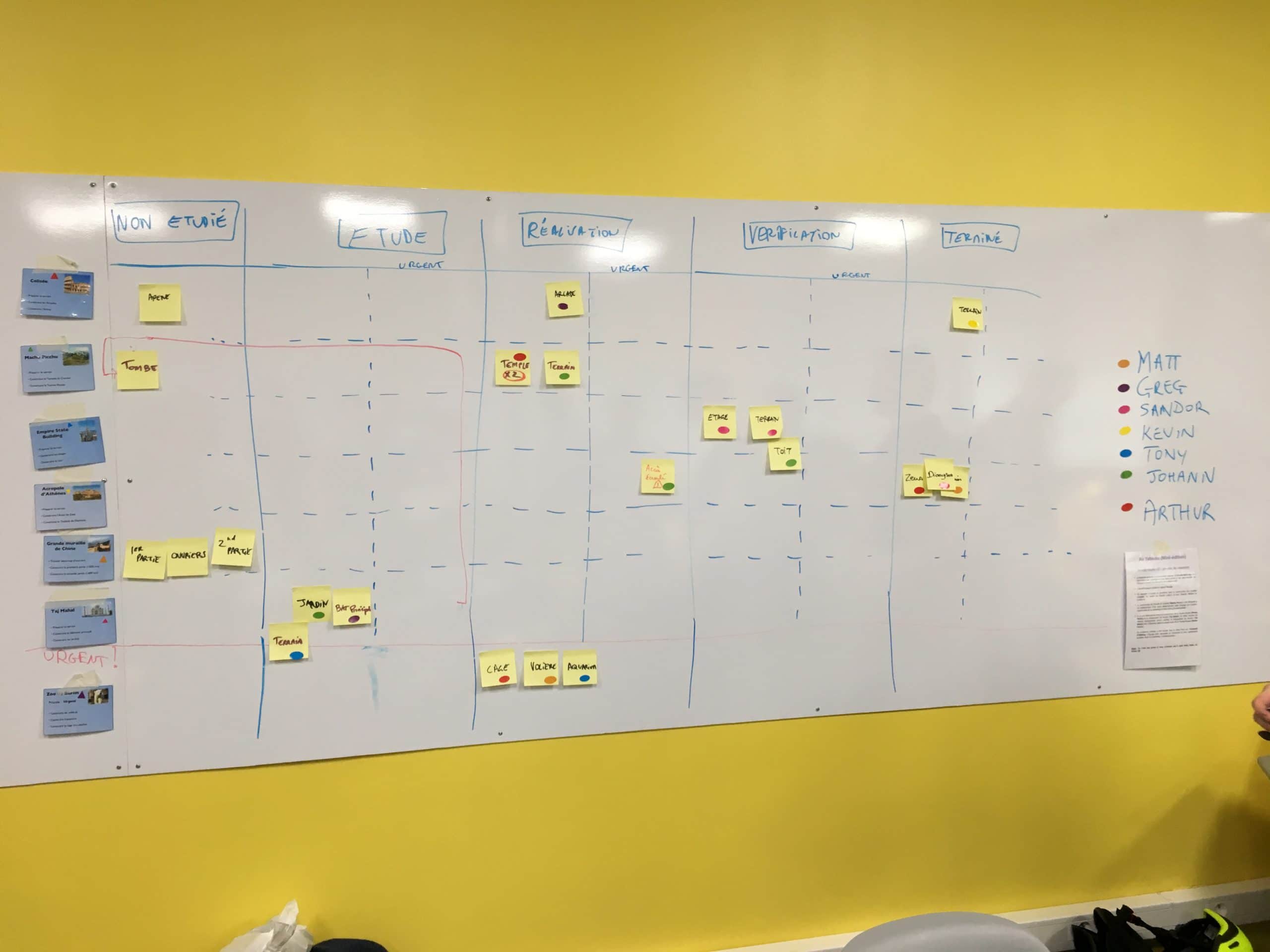






Une réponse
Et bien si tu l’as refait 🙂